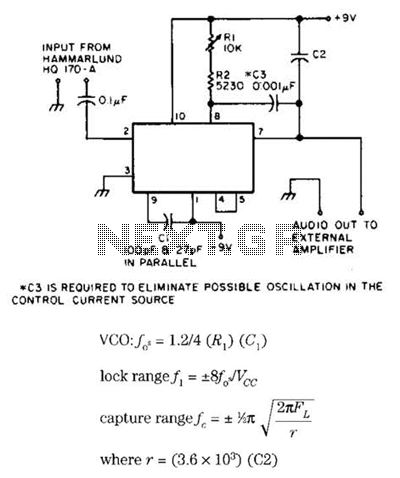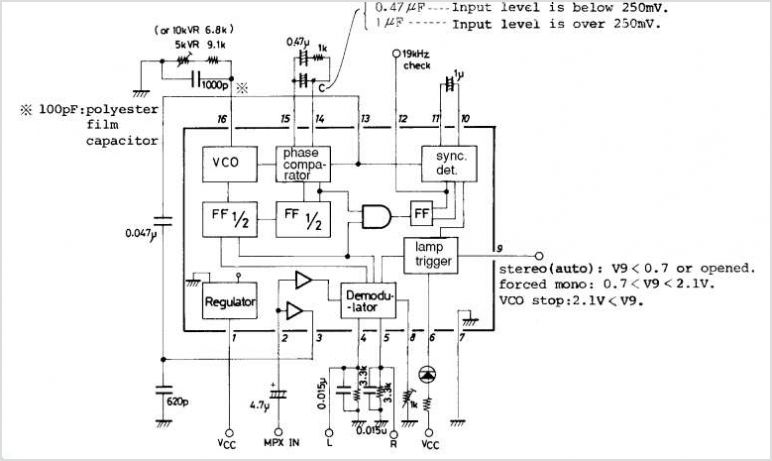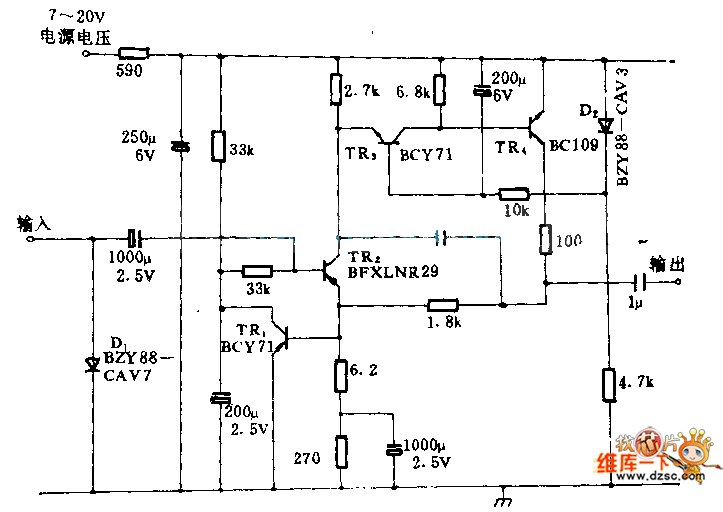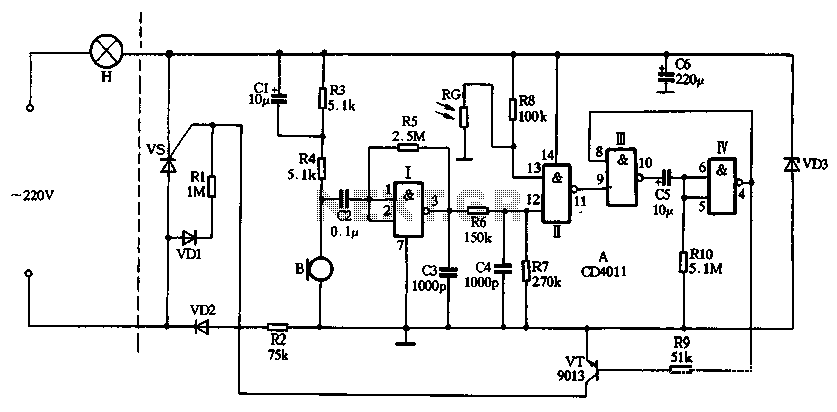
455Khz Fm Demodulator Circuit

Useful for narrowband frequency modulation (NBFM) reception on older shortwave receivers that lack this capability, this circuit employs a phase-locked loop (PLL) integrated circuit, specifically the N565N. It was originally designed for use with an old Hammarlund HQ-170 receiver, facilitating reception for both 6- and 10-meter FM bands.
The circuit utilizes the N565N PLL IC to demodulate NBFM signals effectively. The N565N is a versatile PLL device known for its stability and performance in radio frequency applications. The circuit is configured to lock onto the incoming FM signal, ensuring that the output audio signal is a faithful reproduction of the original modulation.
To implement this circuit, the first step involves connecting the N565N to the antenna input of the shortwave receiver. The PLL's reference frequency is derived from a local oscillator, which can be set to the desired frequency range for either the 6-meter or 10-meter band. The output of the PLL is then fed to a low-pass filter to eliminate any high-frequency components, resulting in a clean audio signal suitable for further amplification or direct listening.
The circuit design may also include additional components such as capacitors and resistors to stabilize the PLL operation and optimize the filtering process. Proper power supply decoupling is essential to prevent noise from affecting the PLL's performance.
Overall, this circuit represents an effective solution for enhancing the capabilities of older shortwave receivers, allowing them to receive NBFM transmissions with improved clarity and fidelity. It is particularly beneficial for amateur radio enthusiasts and collectors who wish to preserve and utilize vintage equipment in modern communication scenarios. Useful for NBFM reception on older shortwave receivers lacking tills capability, This circuit uses a PLL IC, an N565N, to achieve this. It was originally used with an old Hammarlund HQ-170 receiver, for both 6- and 10-m FM reception.
The circuit utilizes the N565N PLL IC to demodulate NBFM signals effectively. The N565N is a versatile PLL device known for its stability and performance in radio frequency applications. The circuit is configured to lock onto the incoming FM signal, ensuring that the output audio signal is a faithful reproduction of the original modulation.
To implement this circuit, the first step involves connecting the N565N to the antenna input of the shortwave receiver. The PLL's reference frequency is derived from a local oscillator, which can be set to the desired frequency range for either the 6-meter or 10-meter band. The output of the PLL is then fed to a low-pass filter to eliminate any high-frequency components, resulting in a clean audio signal suitable for further amplification or direct listening.
The circuit design may also include additional components such as capacitors and resistors to stabilize the PLL operation and optimize the filtering process. Proper power supply decoupling is essential to prevent noise from affecting the PLL's performance.
Overall, this circuit represents an effective solution for enhancing the capabilities of older shortwave receivers, allowing them to receive NBFM transmissions with improved clarity and fidelity. It is particularly beneficial for amateur radio enthusiasts and collectors who wish to preserve and utilize vintage equipment in modern communication scenarios. Useful for NBFM reception on older shortwave receivers lacking tills capability, This circuit uses a PLL IC, an N565N, to achieve this. It was originally used with an old Hammarlund HQ-170 receiver, for both 6- and 10-m FM reception.





